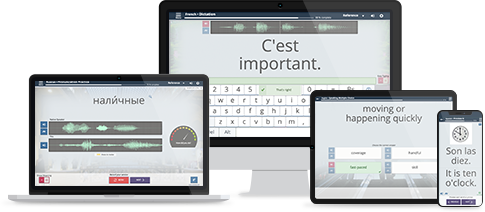The grammatical genders of German nouns seem to be a pain in the neck for most foreign learners of German. Therefore, I would like to give you some hints whether a particular noun can be masculine, feminine or neuter in German. Subsequent to my two previous posts I will continue with masculine German nouns.
In my two last posts you learned that all nouns are masculine, which match the following features. German nouns are masculine when they denote:
| – a male human
– a male animal
– a male occupation
– an animal species
– a mineral or stone |
– a season of the year
– a month
– a day of the week
– a daytime
– a point of the compass |
a) Winds, precipitation, weather phenomena
Whenever you will talk about the weather you can be sure that the nouns you would like to use in your speech are masculine.
| der Wind – wind
der Taifun – typhoon
der Sturm – storm
der Hurrikan – hurricane
der Orkan – hurricane
der Tornado – tornado
der Regen – rain |
der Schnee – snow
der Monsun – monsoon
der Hagel – hail
der Nebel – fog
der Donner – thunder
der Blitz – lighning
der Niederschlag – precipitation |
Exceptions are: das Wetter – weather / die Brise – breeze / das Gewitter – thunderstorm
b) The following five nouns that end with “–ee”
der Kaffee – coffee
der Tee – tea
der See – lake
der Schnee – snow
der Klee – clover
Please note well that the German word “See” can also refer to the ‘sea’, but only when you replace the article “der” with “die”. Hence, “der See” means “the lake” and “die See” means “the sea”, for example: die Ostsee = the Baltic Sea; die Nordsee = the North Sea.
b) Brand names of cars and types of trains
Brand names of cars and types of train are usually masculine, regardless whether you are talking about German cars and trains or foreign ones.
| der Audi
der Opel
der BMW
der Fiat
der Renault
der Ford
der Volkswagen (VW)
der Mercedes
der Volvo |
der Chevrolet
der Ferrari
der Porsche
der Güterzug – freighttrain
der TGV (French train)
der ICE (German high-speed train)
der Acela Express (American high-speed train)
|
c) Names for currencies
The majority of the world’s currencies are masculine in German.
| der Dollar – dollar
der Euro – euro
der Rubel – ruble
der Peso – peso
der Franc – franc
der Real – real |
der Dinar – dinar
der Lew – lev
der Rial – rial
der Yen – yen
der Schilling – shilling
der Zloty – zloty |
Exceptions are: die Mark – mark / die Krone – krone / die Rupie – rupee / die Lira – lira
To be continued…





Comments:
Lev Raphael:
Ganz hilfsbereit!
Shorthand for me for some of this is: weather, calendar, compass.
kasam maharjan:
Ich mag es so sehr,
Jim:
das Pfund (britisches Pfund)